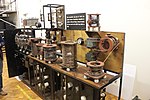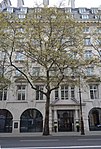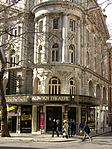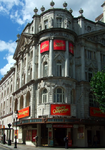India House, London
AldwychDiplomatic missions in LondonDiplomatic missions of IndiaGovernment buildings completed in 1930Grade II listed buildings in the City of Westminster ... and 4 more
Herbert Baker buildings and structuresIndia and the Commonwealth of NationsIndia–United Kingdom relationsUnited Kingdom and the Commonwealth of Nations

The High Commission of India in London is the diplomatic mission of India in the United Kingdom. It is located in India House on Aldwych, between Bush House, what was Marconi House (now Citibank) and Australia House. It faces both the London School of Economics and King's College London. Since 1981, India House is a Grade II listed building.
Excerpt from the Wikipedia article India House, London (License: CC BY-SA 3.0, Authors, Images).India House, London
Aldwych, London Covent Garden
Geographical coordinates (GPS) Address External links Nearby Places Show on map
Geographical coordinates (GPS)
| Latitude | Longitude |
|---|---|
| N 51.5124 ° | E -0.1183 ° |
Address
High Commission of India
Aldwych
WC2B 4NA London, Covent Garden
England, United Kingdom
Open on Google Maps









